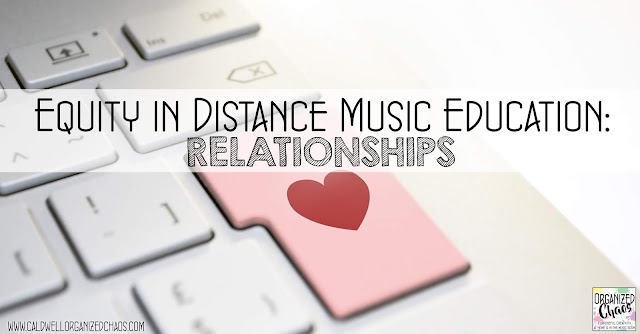If you haven't done a found sound lesson in this distance learning scenario, are you even a real music teacher?!? Just kidding, but seriously, found sound is a natural topic that's perfect to do at home. No need to save your own recycling for months, collect donations, or ask students to bring things in. And no matter what their home situation may be, they're sure to have something they can use to make music, even if it's just the floor or a stick! Here are some of my favorite lessons using found sound.
Online Teaching
There are so many amazing videos out there that are perfect for inspiring students and showing them the endless possibilities with found sound. Here are two favorites, but you can see several more in this playlist (I've shared this playlist with my students when I've done these lessons).
Group Playing
Online Teaching
There are so many amazing videos out there that are perfect for inspiring students and showing them the endless possibilities with found sound. Here are two favorites, but you can see several more in this playlist (I've shared this playlist with my students when I've done these lessons).
I also like demonstrating some different found sound ideas in my own video, just showing them how to find random objects around the house, whether it's a can of corn or a cardboard box or a spoon, and make lots of different sounds with those items. In my experience students have an easy time coming up with objects to use, but have a harder time thinking past the obvious to come up with different ways to use those objects.
Once they have some ideas for how to create music with found objects around their home, there are lots of ways to frame it in a lesson!
Exploration
Honestly my favorite assignment to do with found sound is just to encourage them to come up with a song, any song. No rules except they can't use any actual musical instruments or their singing voice. Depending on the platform you're using and your district's regulations, it's ideal if they can submit a video through something like Flipgrid or Seesaw. But they could also upload/ email an audio recording or simply describe what they used to make sounds and how, and even give their song a title.
Soundscapes
One of my favorite ways to get students of all ages composing without notating is through soundscapes. Ask students to create the image of a particular scene, like a beach, or even a feeling like sadness, using found sounds. Another similar idea is to show them a picture- I grabbed an abstract painting from the internet- and ask them to create a piece that goes with the picture. You can read more details about how I use soundscapes in the regular classroom in this post for more ideas.
No Tech / Packets
If you're sending home packets of assignments rather than using an online platform, a lot of the lesson ideas for online learning will still work- students can still create their own songs or soundscapes using found sounds- they just won't be able to submit any recordings and you won't be able to directly share the videos with them unless you give them the directions to find them.
Of course my favorite idea for take home packets is a choice board! Here is a choice board for found sound that you are welcome to copy and share with your students:
Virtual
Group Playing
In addition to the online options mentioned above, with live virtual music class sessions you could also use found sound to have students echo back patterns or take turns improvising 4-8 beat patterns. With the sound lag they won't be able to play things together as an ensemble, but anything where individuals take turns will work, and since you can see them in real time you can help encourage them to come up with new ways to make sounds using the same item as well!
Books
One of my favorite ways to use found sound, especially with younger students, is to add sound effects to stories! Since there's no reason the timing has to line up perfectly, this is a great way to do something together as a class over live video. Assign individual students to different sounds in the story, and have them make their sound using whatever items they find as you read their part of the book. There are a million books that are great for this, but if you want to see some of my favorites here are some ideas:
I hope this gives you some ideas to use with your students in this confusing and difficult time! If you've come up with more great ideas using found sound through distance learning, please share them in the comments below. Don't forget, I'm compiling all of my posts for school closures into one page for easy access- head to that page for more ideas:Books
One of my favorite ways to use found sound, especially with younger students, is to add sound effects to stories! Since there's no reason the timing has to line up perfectly, this is a great way to do something together as a class over live video. Assign individual students to different sounds in the story, and have them make their sound using whatever items they find as you read their part of the book. There are a million books that are great for this, but if you want to see some of my favorites here are some ideas:








































